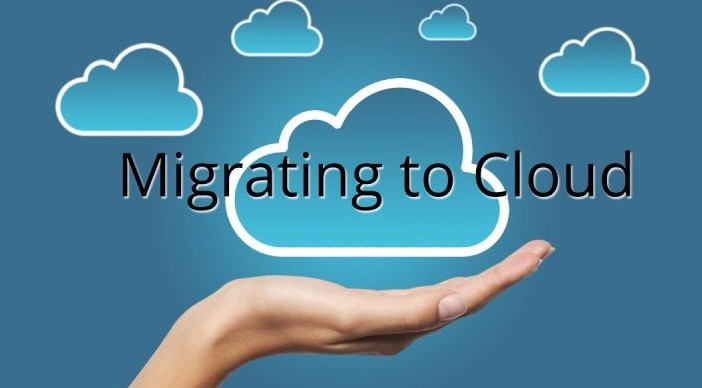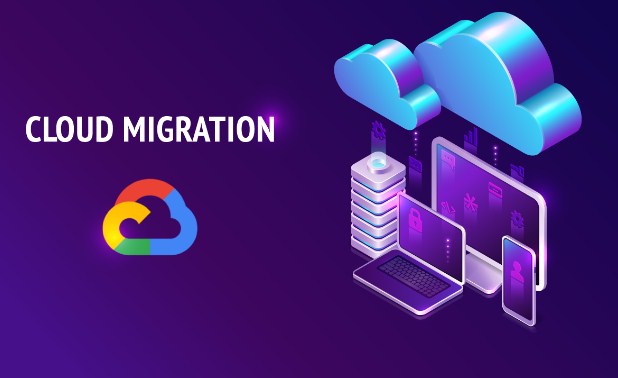Big Data Cloud Migration – In the fast-paced world of data, businesses are increasingly turning to big data cloud migration as a strategy to enhance scalability, improve performance, and reduce costs. But what exactly is big data cloud migration, and how can your organization leverage it for optimal growth and efficiency? This comprehensive guide explores the benefits, top tools, and solutions available for big data cloud migration in 2025.

What is Big Data Cloud Migration?
Big data cloud migration refers to the process of transferring large volumes of data, as well as the systems and infrastructure that support them, from on-premise environments to a cloud-based infrastructure. The goal is to leverage the cloud’s ability to scale dynamically and provide high-performance computing power that traditional data centers cannot.
The Key Elements of Big Data Cloud Migration:
- Data Transfer: Moving data from legacy systems to the cloud.
- Integration: Ensuring that the data is seamlessly integrated into cloud-based systems.
- Optimization: Enhancing the performance of your data through cloud-based analytics and machine learning.
This migration is critical for businesses dealing with large data sets because cloud platforms offer improved flexibility, data security, and cost-effectiveness.
Benefits of Big Data Cloud Migration
1. Scalability: Scale as You Grow
One of the primary benefits of migrating big data to the cloud is scalability. The cloud offers a virtually infinite amount of resources, meaning businesses can scale their data storage and computing needs without being constrained by physical hardware. Whether your data grows exponentially or fluctuates in size, the cloud adapts to your needs.
2. Cost Efficiency: Pay As You Go
Cloud migration allows companies to cut down on operational costs associated with maintaining on-premise infrastructure. With pay-as-you-go pricing models, you only pay for what you use, avoiding the costs of underutilized resources. This is particularly advantageous for small and medium-sized businesses (SMBs) that need flexibility.
3. Improved Performance: Speed and Reliability
Cloud providers like AWS, Google Cloud, and Azure have robust data centers designed for high availability and low latency. With optimized cloud infrastructure, your big data applications can run faster, reducing processing time and improving operational efficiency.
4. Enhanced Security: Robust Protection for Your Data
Migrating to the cloud means leveraging advanced security protocols provided by leading cloud platforms. They offer multi-layered security systems, including data encryption, access controls, and regular audits, ensuring that your big data is protected from potential cyber threats.
5. Data Analytics & AI Integration: Gain Insights Faster
Cloud environments integrate seamlessly with data analytics tools and AI-driven services. By moving your data to the cloud, you unlock the power of analytics and machine learning, allowing you to gain actionable insights quickly and make data-driven decisions.
Best Tools and Solutions for Big Data Cloud Migration
There are several top-tier tools that can make the big data cloud migration process smoother and more efficient. Below are five of the most trusted solutions in 2025:

1. Amazon Web Services (AWS) Data Migration Service
AWS offers one of the most popular migration tools, the AWS Data Migration Service. This service is ideal for transferring large volumes of data between different storage systems, whether on-premise or cloud-based.
Features:
- Minimal downtime: Enables continuous replication of data during migration.
- Supports multiple databases: Migrates data across different database types, including SQL Server, Oracle, and MySQL.
- Security: End-to-end encryption for data in transit.
Pros:
- Flexible and scalable.
- Reliable service backed by Amazon’s infrastructure.
- Supports complex, multi-region migrations.
Cons:
- Pricing can be a bit complicated.
- Requires some expertise in AWS services.
Price:
Pricing is pay-as-you-go, depending on the data size and migration complexity. Visit AWS DMS Pricing for more details.
2. Google Cloud Data Transfer
Google Cloud provides a data transfer service that makes it easy to move massive datasets to Google Cloud storage from any on-premises system or another cloud provider.
Features:
- Easy integration with Google Cloud services.
- Multiple transfer methods: FTP, HTTP, and more.
- Support for large files: Can migrate petabytes of data.
Pros:
- Fast and simple data transfer.
- Google’s global network for reliable service.
- No downtime during migration.
Cons:
- Not suitable for all types of data formats.
- Can incur additional costs for large-scale migrations.
Price:
Google Cloud offers various pricing options depending on the data volume and region. For detailed pricing, visit Google Cloud Storage Pricing.
3. Azure Data Migration Service
Microsoft’s Azure Data Migration Service simplifies the transfer of on-premise data into Azure storage solutions. It’s especially useful for organizations already using Microsoft services.
Features:
- Automated data migration: Minimize manual intervention during the transfer process.
- Comprehensive monitoring: Track migration progress in real time.
- Data consistency: Ensures that data remains consistent and intact.
Pros:
- Strong integration with Microsoft ecosystem.
- High security with built-in encryption.
- Strong technical support.
Cons:
- Can be complex to set up for beginners.
- Pricing may vary depending on your specific needs.
Price:
Azure offers a pay-per-usage model, based on migration throughput and volume. For more details, visit Azure Pricing.
4. IBM Cloud Data Migration
IBM offers a robust cloud migration solution, particularly geared toward enterprise-level data migration.
Features:
- End-to-end migration: From planning to execution and optimization.
- Cloud-native analytics: Post-migration support with powerful analytics.
- Hybrid cloud support: Works well for organizations with multi-cloud setups.
Pros:
- Ideal for enterprises with complex needs.
- Seamless integration with IBM’s AI and analytics tools.
- Expert support and consulting available.
Cons:
- Might be expensive for smaller businesses.
- Can require specialized knowledge to use effectively.
Price:
Contact IBM for a personalized pricing plan based on your migration needs: IBM Pricing.
5. CloudEndure Migration
CloudEndure is a highly specialized solution for migrating large datasets with minimal downtime, known for its fast and efficient process.
Features:
- Continuous replication: Data is replicated in real-time.
- Disaster recovery: Built-in disaster recovery features for added peace of mind.
- Migration across multiple platforms: Works with AWS, Azure, Google Cloud, and more.
Pros:
- Fast and reliable migration.
- Effective disaster recovery capabilities.
- Easy to use, even for beginners.
Cons:
- Might require additional resources for large-scale migrations.
- Limited reporting features compared to other tools.
Price:
Pricing depends on the migration scale and target environment. Visit CloudEndure Pricing for details.
Comparison Table of Big Data Cloud Migration Tools
| Product | Use Case | Pros | Cons | Price | Features |
|---|---|---|---|---|---|
| AWS Data Migration | Large-scale migrations | Scalable, flexible, secure | Complex pricing model | Pay-as-you-go | Multiple databases, encryption |
| Google Cloud Data Transfer | Fast data transfer | Fast, reliable, large file support | Not ideal for all data types | Pay-as-you-go | Easy integration, multiple methods |
| Azure Data Migration | Migrating data to Azure | Strong integration, secure | Requires expertise, complex setup | Pay-per-usage | Automated migration, monitoring |
| IBM Cloud Migration | Enterprise-level migrations | Comprehensive, strong analytics | Expensive for small businesses | Custom pricing | End-to-end migration, AI integration |
| CloudEndure Migration | Fast migrations with minimal downtime | Fast, disaster recovery features | Limited reporting | Custom pricing | Real-time replication, multi-cloud |
Where to Buy & How to Purchase These Tools
Each of the products listed above offers direct purchase options through their respective websites. Below are links to their purchasing pages:
- AWS Data Migration Service
- Google Cloud Data Transfer
- Azure Data Migration Service
- IBM Cloud Migration
- CloudEndure Migration
For each tool, you can find detailed information about pricing, installation, and licensing models on their respective websites.
Frequently Asked Questions (FAQs)
1. What is the main advantage of big data cloud migration?
The primary advantage is scalability. By moving your data to the cloud, you can easily scale storage and compute resources as your data grows, all while reducing operational costs.
2. Which cloud platform is best for big data migration?
AWS, Google Cloud, and Azure are the most popular platforms for big data migration. The best choice depends on your specific needs, such as the size of the data, existing infrastructure, and budget.
3. How long does the migration process take?
Migration time depends on the volume of data, the complexity of your systems, and the tools used. It can range from a few days to several weeks.
4. Do I need technical expertise to migrate big data to the cloud?
Yes, cloud migration typically requires a certain level of technical knowledge, but many tools provide guided assistance and support to make the process easier.
5. What is the cost of big data cloud migration?
Costs vary significantly depending on the platform, data volume, and specific migration tools. Most platforms offer pay-as-you-go pricing, with costs calculated based on usage.
In conclusion, migrating your big data to the cloud offers significant benefits in terms of scalability, cost savings, and enhanced performance. By choosing the right tool and strategy, your business can unlock new levels of efficiency and growth. If you’re ready to start your migration journey, check out the options above and begin planning your move to the cloud today!
Read More >>>
- Big Data vs Cloud Computing: A Comprehensive Guide to Understanding and Choosing the Right Technology
- Big Data vs Cloud Computing: Which is Better for Your Business?